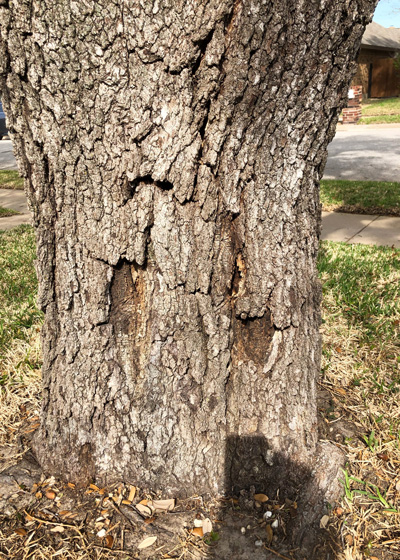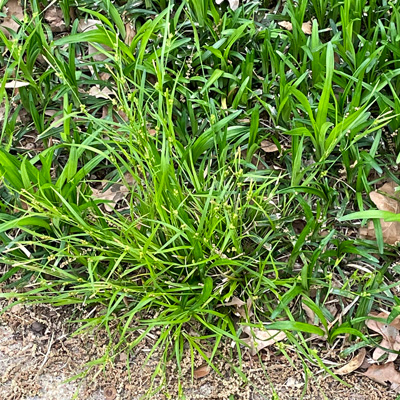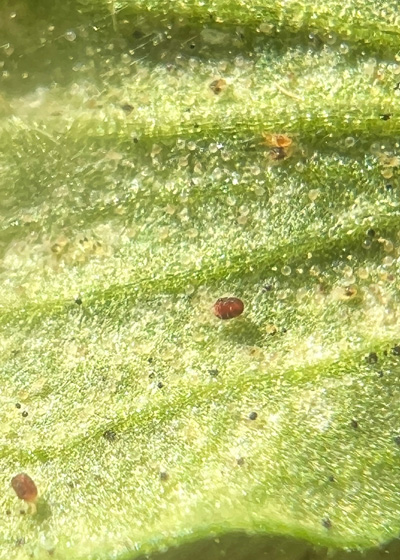Q&A – Ask Neil: April 6, 2023
(Please read these instructions carefully.)
Before you post your question, please look at recent issues to see if someone else has already asked it. You might find your answer there.
How to submit your question…
• Click the link provided below to post your question. After you submit your question, a new window will pop up giving you the address to which you can e-mail a photo to accompany your question. Clear, medium-resolution photos. (Try to avoid low-res thumbnail photos, please, in case I have to zoom in to see things.)
• Click here to post your question.
• Please only post your question one time.
• One question per reader, please.
• Please use this only for posting questions – not for standard emails.
• Watch for your answer in the following week’s e-gardens.
• I choose those of greatest general interest. For example, plant IDs seldom make the cut.
• I must have your first name or initials.
• I must have your city or county. (Texas is a very large state.)
QUESTION 1
WHAT IS THIS GRASS, AND HOW DO I GET RID OF IT?
Question: What is this grass that is coming up in my yard? It’s in little patches here and there, and it gets worse every spring. How do I get rid of it? Jim H., Pottsboro, Grayson County.

Answer: I can’t see any seedheads in the photo. It looks like it might have been mowed fairly soon before the photo was taken. My best guess, based on the color of the blades and the density and size of the clumps, would be that this is ryegrass. It doesn’t matter too much, however, because you said it comes up every year. That tells us it’s an annual, and the fact that it’s mature now means that it did its growing during the cool months. You prevent cool-season grassy weeds with an application of pre-emergent weedkiller granules one week either side of September 1. You mustn’t miss that date, however, because once these seeds sprout, you’re going to see it for the next winter and spring. There is no spray you can use once it’s growing that will kill it without killing your desirable grass.
QUESTION 2
HOW CAN I ELIMINATE SPIDERWORT IN MY ST. AUGUSTINE WITHOUT DAMAGING MY LAWN?
Question: I have spiderwort growing in my St. Augustine. How can I get rid of it without harming my St. Augustine and the other plants that are nearby? Betty G., Glen Rose.
Answer: Apply a broadleafed weedkiller spray (containing 2,4-D) to the weed at a time when it is growing actively. It would help if you included one drop of liquid dishwashing detergent per gallon of spray and if you used a tank sprayer with a medium droplet size instead of a hose-end sprayer. Read and follow label directions carefully to avoid damage to nearby trees and shrubs, and don’t spray when temperatures are above 90F. Mow frequently to prevent the weed from going to seed.
QUESTION 3
HOW CAN I PREVENT THESE NEXT SPRING? WHAT CAN I DO TO GET RID OF THIS YEAR’S CROP?
Question: I have an over-abundance of these little guys this spring. What is the best way to get rid of them? How can I prevent it from happening next year? Annette B., Tarrant Co.

Answer: These are cedar elm seedlings. It’s the same good fortune I described to the reader in Answer 2 last week. The short answer is to scrape them off when the soil is dry by using a well-sharpened hoe this time, then put a layer of mulch over the bed.
QUESTION 4
HOW WOULD LYSIMACHIA BE AS A GROUNDCOVER FOR FULL SUN?
Question: I’ve been on the lookout for groundcovers that can handle sun. I know Asian jasmine and purple wintercreeper are on the list but saw this listed as Lysimachia for full sun and I like the look. Thoughts? Peter K., Irving.

Answer: Plant a small bed of it first. It’s a lovely little groundcover, but I’ve had better luck with it in small spaces and where it had protection from the afternoon sun. It did better for me with well-prepared, highly organic planting soil as well. It’s not the super-dependable workhorse that the other two are, which explains why you rarely see it in commercial and even residential landscapes in the Metroplex where you live. The temperatures flat on the ground are brutal in July and August.
QUESTION 5
WHAT ROSE WOULD BE BEST ON A RAIL FENCE BACKED BY HORSE WIRE?
Question: Can you recommend a rose to train on a rail fence that is backed by horse wire? It is in an area that receives full sun. Karen R., Near Gainesville.
Answer: 15 years ago my answer would have been Lady Banksia rose. I love its small, soft yellow blooms and the fact that it’s thornless, therefore easily trained along a fence. However, like all varieties of roses, it is susceptible to the fatal rose rosette virus that has run rampant across North Central Texas. You’ll notice how few really good rose plants you’ll see now compared to 15 years ago when the virus became epidemic in your general area. I would suggest you consider other types of vines. Crossvines are lovely, but my first choice would be Madame Galen trumpetcreeper.
QUESTION 6
IS THIS A NORMAL AMOUNT OF RADIAL SHAKE FOR A LIVE OAK AFTER THE COLD OF FEBRUARY 2021?
Question: Should this amount of “radial shake” on a 40-year-old live oak concern me? Robert W., Tarrant Co.

Answer: Yes. I would be concerned. You don’t ever want bark to separate like that. For anyone reading this who is unfamiliar with the term “radial shake,” it’s the separation of bark from the trunk of a tree that happens after catastrophically cold temperatures like much of Texas experienced in February 2021. Live oaks were hit especially hard, and we lost perhaps 10 percent of the state’s landscape live oaks due to damage done by the cold. You should have a certified arborist work with this tree to help get it back on its road to recovery. Hopefully the bark on the other side is soundly attached. This loose bark will gradually slough off and fall to the ground. I think I see new bark trying to form beneath it. Do not peel or try to trim it.
Note: Is that a penny I see beside the shadow of your phone on the ground?
QUESTION 7
HOW CAN I STOP SPIDER MITES BEFORE THEY RUIN MY TOMATO CROP AGAIN THIS YEAR?
Question: The past two years spider mites have ruined my tomato plants just as they were putting out fantastic harvests. What can I do to prevent them in the first place? Randy C., Rockwall.
Answer: You now know what their damage looks like from your prior experiences. (Lower leaves begin to turn tan and mottled.) You know how to thump a leaf over white paper and look for the nearly microscopic specks to start moving around. Get them when they’re just starting on the lowest leaves and you should be able to head them off. They are on the backs of the leaves, so be sure to spray both upper and lower leaf surfaces. Many of the general-purpose organic and inorganic insecticides do state that they will help in controlling mites.
QUESTION 8
WHAT IS THIS WEED THAT HAS INVADED MY LIRIOPE, AND WHAT WILL CONTROL IT?
Question: I have a large liriope bed that has been infiltrated by this weed. It’s gotten worse over the past couple of years. I’ve used a pre-emergent around March 1 but without success. What can I do? Jim O., Arlington.

Answer: I believe you have green Kyllinga, the aggressive nutsedge-like weed that can take over plantings in a hurry. It’s not particular as to its growing conditions, but it’s especially happy to be in moist, sunny sites. Pre-emergents won’t work on it. Removing it mechanically (with a trowel or other specialized tool) is fine for small outbreaks. The same Sedgehammer that is effective against nutsedge can also be used on it.
Whatever means you employ, do so immediately. Green Kyllinga is a real problem, as you will see in this Fact Sheet from the University of Maryland. https://extension.umd.edu/resource/green-kyllinga
QUESTION 9
WHAT IS THIS ON MY PANSIES?
Question: My pansies have an infestation of some type of insect. Is there a systemic insecticide that won’t harm butterflies or bees? Nixie R, Midlothian.

Answer: You called for an ace entomologist, and I answered the phone instead. I believe I’m seeing 8 legs on the nymph visible near the top of your photo. That would suggest that we’re seeing spider mites and not true insects. That would also suggest that you have really good magnification on your camera. Apply Malathion with enough pressure that you get it onto both the top and bottom leaf surfaces. Spray when it’s almost dark in late evening. By then the butterflies and bees will have shut down for the day. For what it’s worth, pansies only have a couple more weeks of prime bloom left in them. Think about whether you want to spray this late or not anyway. Systemics would be too slow for pansies. Heat would have taken the plants before the systemic insecticide could do its job.
QUESTION 10
WHAT PLANTS WOULD BE GOOD IN A PARKWAY (BETWEEN THE FRONT WALK AND THE CURB)?
Question: The city has elected to install a sidewalk in my front yard. In so doing they have created a maintenance problem with the bermuda sod. What plants would grow there without getting too wide or requiring too much irrigation? Justin J., Austin.
Answer: Purely from a design standpoint (also with maintenance in mind), I usually recommend that people use turfgrass in the parkways. Planting shrubs or groundcovers in that long, narrow strip is even more work. They’re harder to water and harder to feed. You must prune them with a hedge trimmer, and you’re correct – shrubs and groundcovers tend to outgrow the boundaries. Weeding is a hands-and-knees experience for the first couple of years. Visually, it also creates a psychological wall between you and passers-by instead of allowing their eyes to be drawn to the focal point of your home (its front door). But, to your answer, if I had to put plants there, I’d probably use purple wintercreeper, Harbour Dwarf or Flirt nandina. I’m sure I’d use small river rock, too.
QUESTION 11
COULD I USE MONDOGRASS BENEATH A TREE WHERE I NOW HAVE SPARSE ST. AUGUSTINE?
Question: If I wanted to start a groundcover beneath a tree where we now have sparse St. Augustine, could I use mondograss? It’s both sun, but less and less. Also shade. Any special instructions? Donna S., North Richland Hills.
Answer: Regular mondograss is my own personal “go-to” shade groundcover plant. I rototill to 4 or 5 in., incorporating 2 in. of finely ground pine bark mulch into it as I do. I use tennis-ball-sized clumps and space them checkerboard-style about 10 in. apart. Kept watered regularly during the summer, they should cover within 15 months.
